White Haze On Granite Composite Sinks
Share
White Haze on Granite Composite Sinks
What happened to my sink, why is it turning white, and how can I fix it? Follow along, and I'll explain the four most common variations of a white haze on composite sinks.
When composite sinks are new, they include a durable factory finish and vibrant colors. Over time, some of these sinks, usually dark colors, can get a white haze. This haze is more noticeable on black, brown, and gray sinks than on white or beige.
There are four types of white haze commonly found in/on composite sinks:
- Cleaning Issues (usually a simple repair and easy to prevent)
- Abrasive (Usually a simple repair and easy to prevent)
- Chemical (Quickly progresses into permanent damage)
- Heat (Quickly progresses into permanent damage)
Cleaning Issues:
Cleaning issues such as water spots and soap scum can easily be avoided by wiping your sink out after each use. This is why makers of all composite sinks say to wipe them out after each use.
Water Spots, Hard Water Mineral Deposits (Calcium, Magnesium, Lime)
Water spots are caused by solids in hard water known as mineral deposits: calcium, magnesium, or salts from a water softener. Unless you wipe your sink out after each use, the water evaporates, leaving these solids behind, bonding to the sink. Mineral deposits can spread, build up, and form into crustaceans.
*Cleaning composite sinks with textured pads and dish soap progressively develops into superficial damage that can easily be repaired.
Learn to safely deep clean and protect composite sinks in the "Helpful Links" section below.
Soap Scum Buildup
Soap scum is a combination of solids: soap residue, mineral deposits, and possibly salts from a water softener. If a composite sink is washed with dish soap but not thoroughly rinsed and wiped dry, any water left behind evaporates, leaving the solids behind and sticking to the surface. This process is commonly called soap scum buildup.
*Cleaning composite sinks with textured pads and dish soap progressively develops into superficial damage that can easily be repaired.
Learn to safely deep clean and protect composite sinks in the "Helpful Links" section below.
pH-Neutral Cleaners (Dish Soap & Daily Stone Cleaners) Can't Remove Mineral Deposits or Soap Scum
It is essential to know the following:
- pH-neutral cleaning solutions cannot remove mineral deposits: calcium, magnesium, lime, rust, or soap scum.
- Stone cleaners and dish soaps that are safe to use on calcareous stones, marble, travertine, limestone, and onyx are all pH neutral.
Abrasive and Non-scratch Pads
Although some cleaning pads with texture are considered "non-scratch," they can progressively cause superficial damage by breaking down the protective factory coating.
* If your sink looks better wet or with oil on it, consider correcting the color with our long-term solution (See Helpful links below).
Chemical Damage
When a composite sink is new, it is resistant to many types of cleaning solutions. However, if friction/textured pads break down the protective coating, a barkeeper's friend or a common calcium lime and rust remover can easily damage composite sinks beyond repair. Other harsh chemicals, such as drain cleaners, oven cleaners, toilet cleaners, and paint thinners, can easily cause permanent damage.
A blemish that cannot be cleaned away and is noticeable when your sink is wet, dry, or oiled is considered permanent damage and cannot be repaired.
If your sink looks better wet or with oil on it, consider correcting the color with our long-term solution (See Helpful links below).
Heat
Damage caused by excessive heat appears in two ways: white blemishes and cracks commonly found around the drain. In both cases, the sink most likely cannot be repaired or restored back to a quality condition.
If your sink looks better wet or with oil on it, consider correcting the color with our long-term solution below.
Helpful Links:
-
Composite Sink Restoration 3-Step Guide: Deep Clean, Restore Seal, Routine Protective Care
- Restore Revive Refresh Composite Sink Treatment
- Shop Composite Sink Cleaners, Sealers, Care & Restoration Products
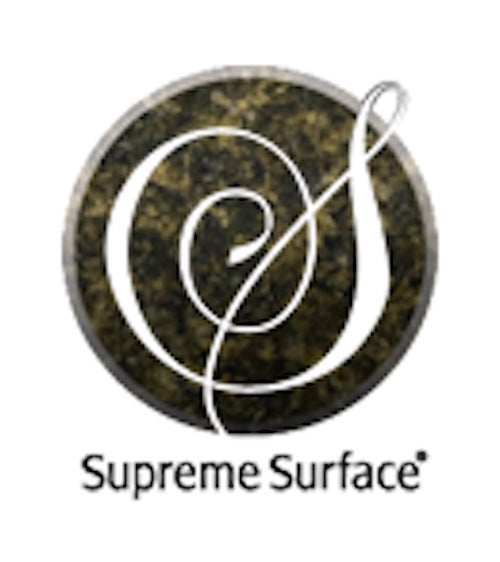
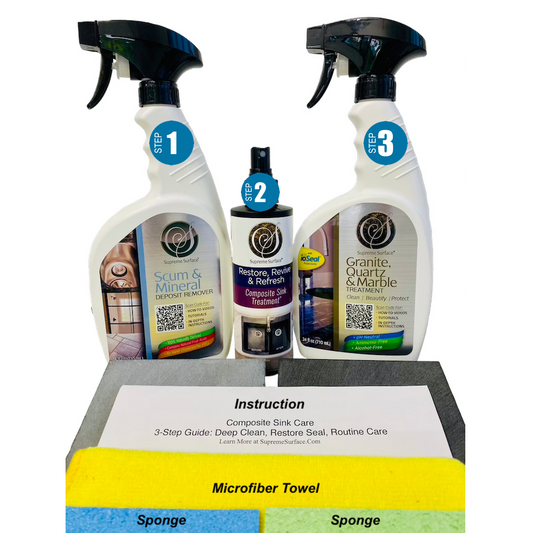
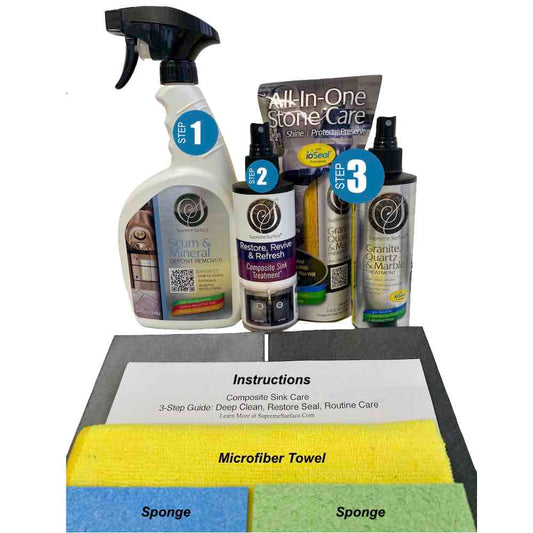
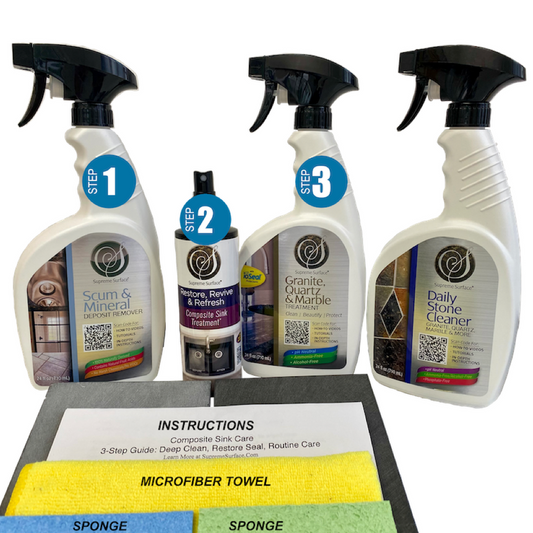
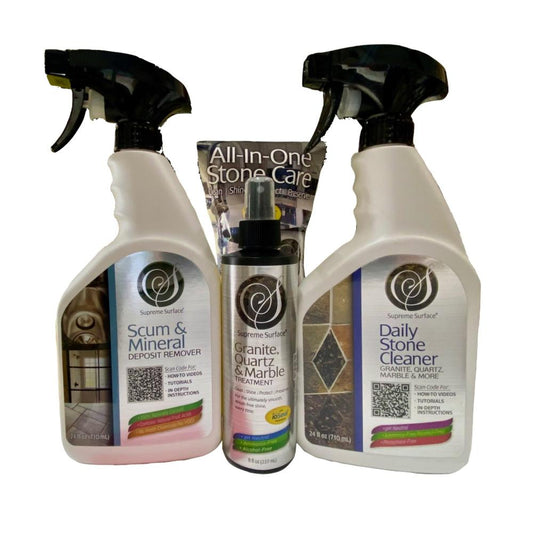
8 comments
Thank Heavens for your products!! They have worked so well for my black composite kitchen sink, where other products failed! Since finding your website and instructional info, I have been able to maintain the 17 yr old sink without the angst & worry I previously experienced. God bless!
Hi! I’ve had a black Kohler sink for about five months and it is starting to have a chalky look around the perimeter. I regularly clean it, but I have not attempted to use anything too potentially harsh (I don’t think), and our water is quite hard. Any guidance would be appreciated. Thank you.
Information/assistance about the composite granite sink restorations that Shannon, D A Mullen, and Wendy mentioned can be figured out through the phone line this blog gives. The customer service has been very helpful and informative; damage on granite sinks appears to be very common.
Our sink has been damaged. What are my options? A couple posts mentioned a restoration kit. More info on that would be great.
I’m interested in the composite granite sink restoration kit Shannon Wastling mentioned. The same thing happened with my Blanco Silgranit sink (vinegar and baking soda mixture). Thanks.